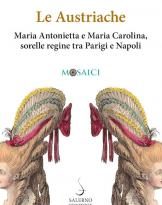Davide Gnola
Ed. Minerva, Argelato (BO) 2014
pp. 127
The author, director of the Maritime Museum of Cesenatico, tells, in this essay, the enterprises of the pirates in the Mediterranean, from the sixteenth century to the beginning of the nineteenth century. Indeed “Towers and other coastal defenses, songs and legends, popular traditions and theatrical works remind us of a historical reality, the corsair war and the ensuing slavery, which from the early sixteenth century to the 1830 around constituted a dominant aspect, already present over the centuries precedents, in relations between Christians and Muslims bordering the Mediterranean. "
After Lepanto, with the end of the direct clashes between the state fleets, "The Mediterranean becomes the theater of a lower war, that is, of the extensive practice of the war of race". Acting with the blessing of the Ottoman Empire, the pirates established their bases not in the great maritime capitals of the Mediterranean, but in other ports, such as Tripoli, Tunis and above all Algiers, cities in North Africa belonging to Barbary. Some of them, like Khayr al-Din (Barbarossa), Dragut, Uluç Alì become admirals of the Ottoman fleet.
The race war, officially abolished in the 1856 with the Treaty of Paris, saw among its protagonists, for a brief period of the 1837, also Giuseppe Garibaldi, who operated on board a garopera - Brazilian fishing boat - when he married the cause of the independence of the Brazilian region of Rio Grande do Sul. Another corsair unknown to most was the Genoese Giuseppe Bavastro (1760 - 1833) "Who carried out his activity in the service of France in the Napoleonic period."
As evidence of how frequent pirate attacks were for seafarers, there are ex-votos, displayed in churches and sanctuaries of the Mediterranean coasts as thanks for the narrow escape. The defense against such attacks, as well as being passive, as shown by the countless watch towers still present on the Italian coast, was also active, through patrol and sea repression actions carried out initially by the ships of the Knights Hospitallers of Malta and by those d Santo Stefano based in Livorno. There were also expeditions organized and paid by private individuals, such as the one wanted, in the 1763, by the merchant class of Genoa, which armed the San Francesco di Paola, a ship of 32 cannons and 207 crewmen. As evidence of the ferocity of the clash with the Barbary fleet, however won by the Genoese ship, a painting remains, exhibited in the Genoa Sea Museum, where one can see the blood that is pouring from the scuppers of the barbarian ships.
Galee, galeazze, barze, galleons, fuste, sciabecchi, fregate, corvette, vascellini, brigantini, tartane, galeotte are names that indicate the various typologies of boats typical of this period. They crossed the Mediterranean carrying, on board, common goods, but above all men and women, which were the most precious preys: they were kidnapped at sea or by coastal towns, they were destined to be used as slaves or to obtain a ransom. The slaves, once at their destination, were used for labor and resided in enclosed places called baths. Some Christian slaves, once kidnapped, converted to Islam, making a career: they were the renegades. Among them the most famous were Giovanni Dionigi Galeni, or Uluç Alì and Scipione Cicala, or Sinan (which means Genoese) Pascià. An opposite case, that is, of a Muslim captured and converted to Christianity, was that of Leo the African.
"The end of the activity of the Barbary corsairs is made to coincide with the French conquest of Algiers, which took place in the 1830, which closes the season of the barbarian regencies and inaugurates the new colonial phase for North Africa." In 1849, then, in Rimini, the first bathing establishment on the Romagna coast was built, with the arrival of bathers that will replace the landing of the corsairs. "This is a radical change: from an unhealthy and dangerous frontier to be monitored, the coast becomes a new resource to be exploited, transforming itself - especially in Romagna - into the familiar place par excellence; and the watchtowers leave the place, on the beach, to the bathing establishments. "
Gianlorenzo Capano












